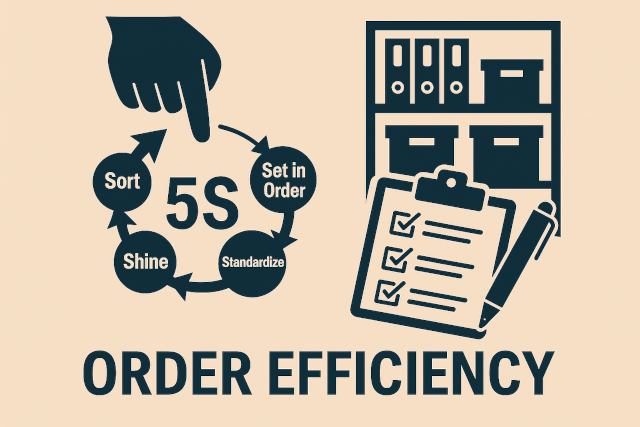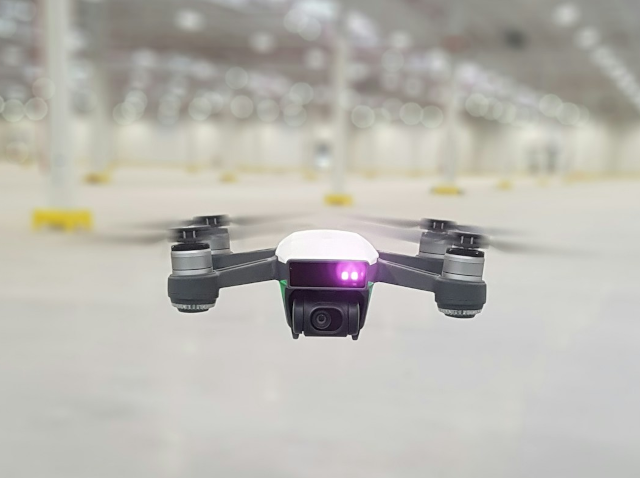The Rise of Digital Twins in Distribution
You’ve probably heard the term digital twin tossed around in WMS demos, automation pitches, or IT strategy meetings.
But what does it really mean in a warehouse?
More importantly—what can it do?
For many in warehousing and distribution, digital twins are no longer just a futuristic concept. They’re becoming a practical tool for visualizing flow, testing process changes, improving traceability, and reducing risk.
This article will break down:
✅ What a digital twin really is in warehouse terms
✅ How it helps with flow, accuracy, and efficiency
✅ Use cases you can apply now (not five years from now)
✅ Implementation tips for small and mid-sized sites
✅ How AI ties in to make it all work smarter
What Is a Digital Twin in Warehousing?
At its core, a digital twin is a live, virtual replica of your warehouse—built from data pulled directly from your systems, sensors, and workflows.
It’s not just a CAD drawing or a static warehouse map.
It’s a data-fed, continuously updated digital model of your operation—capable of reflecting current inventory, equipment status, temperature zones, and movement patterns.
In simpler terms:
It’s a window into your warehouse that lets you see what’s happening now, simulate what might happen next, and test how to improve it safely—without ever moving a pallet.
🔗 Related: What Is a Digital Twin? (In Plain English)
How It Works: Connecting the Physical and Digital Worlds
To create a functional digital twin, you need to connect real-world data sources to your virtual model. These may include:
- Warehouse Management System (WMS): location accuracy, stock levels, movement data
- IoT Sensors: temperature, humidity, door status, equipment vibration
- Labor Tracking Systems: picker zones, task timestamps
- Material Handling Equipment (MHE): status of conveyors, lifts, AGVs
- CCTV or RFID: movement verification, bottleneck confirmation
- Environmental Monitoring: particularly for cold chain or pharma facilities
All this data feeds into a software platform that renders a live visual interface—often in 2D or 3D—with clickable zones, alerts, and overlays.
The key? It’s real-time and interactive.
Not just a dashboard—but a living model you can simulate, analyze, and improve.
Operational Use Cases in Warehousing
Digital twins aren’t reserved for futuristic smart warehouses or heavily automated fulfillment centers.
More and more distribution warehouses of all sizes—even semi-manual, regional DCs—are using digital twins to address real operational challenges.
Below are five practical use cases where digital twin technology is already proving its value on the warehouse floor:
Layout and Slotting Simulation
Rethinking your pick face? Adding a new fast-mover SKU? Struggling with congestion at the end of Aisle 6?
A digital twin allows you to simulate layout changes before committing to physical rework. You can test what happens when you shift high-volume SKUs closer to dispatch, move replenishment stock away from the main pick line, or convert a staging zone into a fast lane.
More than just a floor plan, the twin lets you model the downstream impact on:
- Picker travel distance
- Task completion time
- Aisle-level congestion during peak hours
- Replenishment cycles
Rather than trialing a new layout during live operations—and risking confusion or downtime—you can simulate it first, review the modeled impact, and roll it out with confidence.
Inventory Flow Monitoring
Most WMS dashboards show what’s in stock and where it’s located. But a digital twin shows how that stock is moving over time.
By pulling timestamped data from scan logs, RFID tags, and order histories, digital twins can visually map the flow of goods through your facility—from receiving through putaway, picking, staging, and dispatch.
This reveals:
- Where fast movers are clogging up high-traffic paths
- Which SKUs are over-occupying premium real estate despite low demand
- How inventory flow patterns shift throughout the day, week, or season
Over time, this data helps you redesign pick zones, prioritize slotting changes, and improve flow—based on actual movement, not assumption.
Cross-Dock and Inbound Flow Modeling
Inbound delays and cross-dock backups are common pain points—especially when receiving areas serve both long-term storage and just-in-time (JIT) deliveries.
Digital twins can simulate the entire inbound flow from truck arrival to putaway or cross-dock dispatch, factoring in:
- Dock door assignments
- Unload times
- Staging space availability
- Inventory check-in throughput
- Picking overlap or dock-pick conflicts
By running simulations based on historical delivery patterns and staffing levels, you can restructure your inbound windows, adjust pre-slotting rules, or test a new wave sequencing model.
For example, if trucks consistently bottleneck around 2:30 p.m., the twin might reveal that delayed putaways from earlier waves are still occupying critical staging zones—something hard to spot without layered flow analysis.
Condition Monitoring (e.g. Cold Chain and Ambient Risk Zones)
In temperature-sensitive environments—like food, pharma, or chemical storage—environmental stability is critical.
Digital twins connected to IoT sensors can generate live heatmaps or temperature drift warnings based on:
- Airflow disruptions
- Cooler door dwell times
- Compressor cycling patterns
- Manual door overrides or zone-level faults
These insights allow you to:
- Visually confirm whether cold zones are stable throughout the day
- Detect early signs of cooling system degradation
- Pinpoint exposure risk when incidents occur (e.g., a pallet left outside threshold for 19 minutes)
Beyond cold chain, this use case extends to ambient-sensitive zones—such as flammable goods areas, humidity-sensitive parts, or lithium battery storage.
Downtime and Congestion Analysis
Even in well-run warehouses, idle time, bottlenecks, and workarounds add up—but they’re hard to measure without visibility into the flow of people and equipment.
Digital twins can ingest data from:
- MHE tracking (via GPS or RTLS)
- Scanner timestamp logs
- Task completion metrics from the WMS
- CCTV-based movement heatmaps
By layering this data onto a live floor model, you can pinpoint when and where equipment or labor is being delayed, rerouted, or stacked up:
- Are tuggers routinely queuing near Aisle 4 waiting for outbound clearance?
- Are pickers taking long detours to avoid congested zones?
- Are forklifts spending more time idle than moving between tasks?
These visibility layers transform operational hunches into data-backed insights—leading to better shift planning, aisle policy redesigns, or batching rules.
AI and the Smart Digital Twin
A basic digital twin reflects what’s happening.
A smart digital twin, powered by AI, helps you understand why—and what to do about it.
AI can:
- Forecast risks (e.g., when staging space will overflow)
- Recommend actions (e.g., alternate slotting or staging rules)
- Predict outcomes of proposed changes (e.g., longer waves, earlier cutoffs)
- Detect anomalies like scan volume drops, temperature spikes, or equipment delays
Together, AI and digital twins make it easier to shift from reactive firefighting to proactive decision-making.
Not Just for Tech Giants: Scaling for Smaller Warehouses
Digital twin platforms don’t have to be seven-figure projects.
If you’re running a mid-sized warehouse or even a regional DC, you can start with a lightweight implementation by:
- Integrating your WMS with a 2D heatmap or visual layout tool
- Using basic flow simulations to test new pick paths or racking configurations
- Connecting low-cost sensors (like shelf beacons or temp monitors) to enrich your data
- Exporting daily scan data and running time-motion overlays
These steps create a foundational digital twin, which you can build on as your needs (and budget) grow.
Common Misconceptions (And What’s True Instead)
| Misconception | Reality |
| “You need a fully automated warehouse” | Many twins work with manual operations + data |
| “It’s just for layout design” | True twins enable live monitoring and forecasting |
| “Only billion-dollar DCs can use it” | Scalable platforms now exist for mid-market users |
| “It replaces people” | It augments human decisions—not automates everything |
Implementation Tips: Where to Start
If you’re considering a digital twin trial, focus on these early wins:
- Choose a single area of flow to model first (receiving, staging, replenishment)
- Pull real data from your WMS or labor tracking system—avoid assumptions
- Visualize simply—start with 2D diagrams and simple heatmaps before 3D CAD integration
- Use what you learn to run a real-world test: adjust zone assignments, reslot a pick line, etc.
- Measure before/after metrics—travel time, scan gaps, dock dwell, etc.
Final Thoughts: A Lean Tool for the Digital Age
A digital twin isn’t just an IT upgrade.
It’s a Lean tool—one that makes invisible waste visible.
By showing how your warehouse really works (not just how you think it works), digital twins enable better decisions, faster problem solving, and safer experimentation.
And as AI, WMS, and sensor tech continue to evolve, the barrier to entry is only getting lower.


